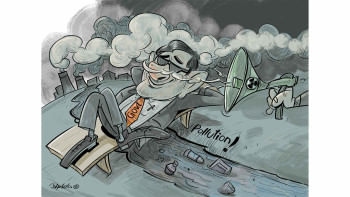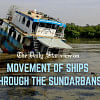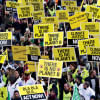Prioritise piped water supply in our municipalities

Ensuring safe water to urban households remains a major public health challenge in Bangladesh. The Sustainable Development Goal (SDG) 6 is to ensure access to water and sanitation for all. Bangladesh has been experiencing rapid increase in urban population since independence: urban population as a percentage of total population increased from about eight percent in 1971 to nearly 40 percent in 2022.
With the rise in urban population, the number of municipalities has also increased in Bangladesh. In 1974, there were only 50 municipalities in the country, which went up to 329 in 2020. However, about half of the municipalities have no piped water supply system, most of which are small towns. Again, except the four largest cities, less than 10 percent of the population in most other towns are connected to the piped water networks. Although access to water in the residential premises increased from 74.2 percent to 82.4 percent between 2013 and 2019 in the country, the water sources are mainly deep or shallow tube wells and are not necessarily free from contamination.
The quality of water is critical for maintaining household health, since poor quality water is directly linked with communicable diseases, such as diarrhoea. It is estimated that more than 80 percent of diarrhoeal disease is attributable to drinking contaminated water, improper sanitation, and poor hygiene.
The Department of Public Health Engineering (DPHE), which is under the LGED ministry, is mandated to construct water supply infrastructure, such as production tube wells, water treatment plants, and distribution pipelines in all the municipal areas across the country. When the construction work is completed, the DPHE hands over the system to the municipalities to operate and maintain. The capital assets are provided free of cost to the municipalities through the Annual Development Programme (ADP) without any repayment requirements, but the local bodies are expected to cover operating costs and the overall financial viability of the water supply systems. The government has been strongly emphasising the need for cost recovery in the water sector in recent years.
The Local Government (Municipality) Act, 2009 legally delegated the responsibility to the municipalities for providing clean water to their urban residents. However, despite the fact that the DPHE is constructing the systems and upgrading them where needed, the municipalities cannot afford to run the water supply systems in an efficient manner. They also cannot make it financially viable due to low water tariff on the consumer end. Most of the municipalities impose water tariffs ranging from Tk 200 to Tk 400 per household per month. The industrial and commercial water tariffs are slightly higher than the domestic rates. The water metres are not in use in smaller municipalities. With low water tariffs, the collection efficiency is also low and may vary between 50 percent and 70 percent, depending on the municipal council's initiatives and the collection efforts made by the water supply staff.
While the DPHE is yet to install the water infrastructure to cover most of the smaller municipalities in Bangladesh, the urban local bodies are unable to run them properly where they do have the system. The revenue earned from water supply is inadequate to maintain a basic piped water system, and therefore remain virtually dependent on the subsidy given out of the holding tax revenue collected by the municipal bodies. Most of the municipalities have also failed to increase the number of water connections, maintain the required quality of water, and collect higher water fees from the consumers. In this situation, most of the urban households continue to use groundwater from both deep and shallow tube wells.
The government has a Sector Development Plan (2011-2025) for drinking water and sanitation. The plan had a target for piped water supply coverage of 80 percent in large municipalities and 70 percent in small municipalities by 2020. By 2025, the sectoral plan has a target of 90 percent coverage in large municipalities and 80 percent in small municipalities. In order to achieve these targets, there is an urgent need to enhance the level of investment in the water sector in the municipalities. It is essential to raise investment in water supply to also achieve the SDG 6 target of "safe and sustainable sanitation, hygiene and drinking water used by all."
The municipal bodies must take water supply as their mandatory function more seriously and draw up a medium-term plan to bring 100 percent of urban population under a piped water supply network by 2030. They are expected to provide clean water to the people and at the same time establish a water tariff as per Model By-Laws (Water Supply), 1999 that is adequate for achieving full cost recovery of water supply. The municipalities should use modern methods such as computerised billing and collection of water tariffs to attain financial viability.
While it is essential to increase piped water supply provision, it is also necessary to raise public awareness to increase demand for clean water and regularly pay the bills. There is a tendency among many urban households, as socioeconomic studies have shown, to continue using water from tube wells for drinking and everyday use and not accept piped water because they need to pay the water tariff.
To change this attitude, the government should revisit its policy of free or heavily subsidised distribution of tube wells in urban areas. When the urban households compare the cost of piped water with tube well water, they find it cheaper to continue with their tube well water. Therefore, there is a need to undertake a communication campaign to popularise piped water and raise demand for it from the perspective of its health consequence, as tube well water contains many impurities.
Therefore, in densely populated municipal areas of Bangladesh, all households must be brought under safe piped water supply networks within the shortest possible time.
Dr Nawshad Ahmed, a former UN official, is an economist and urban planner.

 For all latest news, follow The Daily Star's Google News channel.
For all latest news, follow The Daily Star's Google News channel. 









Comments